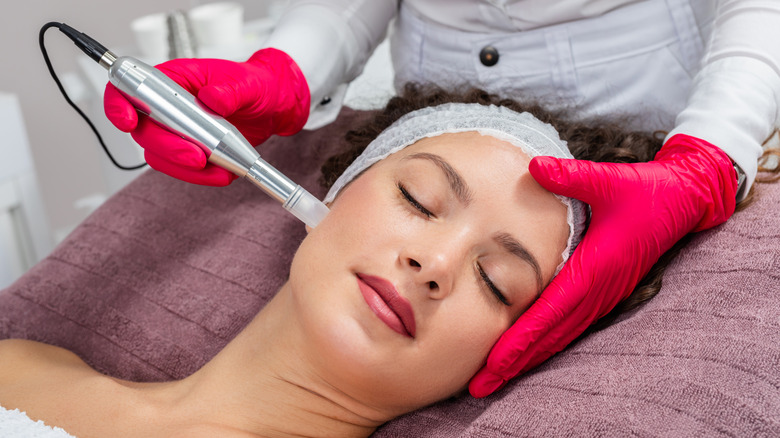ProCell Microchanneling: What Is It And How Can It Help Your Skin If Microneedling Just Isn't Cutting It?
Acne, dark spots, and wrinkles are a few of the most common skincare concerns. Sometimes it seems even with a five-step beauty regime, performed religiously day and night, they just won't give your face a break. Then, to name a few, there are the tougher problems like sun damage, eczema, and rosacea. It may feel like a never-ending cycle of clear skin and breakouts or plump skin and frown lines. Luckily, dermatologists and cosmetic surgeons have worked to deliver affected skin treatments.
Collagen induction therapy is a game changer in the world of skincare. It is fighting back against the body's decreasing rate of collagen production. These anti-aging procedures go by various names — microneedling, dermarolling, and skin needling. Despite their different titles, they all aim to nudge the skin's collagen output upward. You can even microneedle at home. Who knew a process that mimics rolling around in cacti could be the key to youthful skin? Sounds painful? That's one downside to these minimally invasive procedures. However, skin needling is evolving with ProCell microchanneling.
Does ProCell microchanneling beat out microneedling?
Like microneedling, microchanneling uses precision needles to penetrate the skin's surface and promote its regenerative cell process. This controlled prickling tells the skin to produce more collagen, the skin-plumping goodness that fills wrinkles and restores youth. However, with ProCell microchanneling, the needles are smaller and do not puncture as far into the skin. As you can imagine, this innovation makes the process way less excruciating. Beauty might be a pain, but skincare experts are working to change that. These finer needles allow for less needed downtime post-procedure. Plus, you can skip the pre-treatment numbing that's required with microneedling.
ProCell microchanneling doesn't just tell your skin to produce more collagen — the needles are also coated in a restorative serum. The boosting formula is a hyaluronic acid base. This skincare ingredient is known to improve the skin's elasticity, minimize scarring, and reduce the appearance of fine lines. You can schedule your microchanneling to tackle these common skin issues, as well as hyperpigmentation, stretch marks, and rosacea. It sounds almost too good to be true. So what's the catch?
Common post-treatment concerns and aftercare
Cosmetic procedures always come with a wave of caution. It's good to be mindful of the one body you're given. And with this minimally invasive treatment, you can put your mind at ease. It is safe for all skin types, however, those with sensitive skin may experience heightened irritation afterward. Mild skin irritation is common, as well as reddening. Your skin was just stabbed hundreds of times, so these symptoms are normal and can persist for a few days. After the first session, your skin may be noticeably glowing and smooth, but consistent results shine through after three to six sessions.
There is no downtime (although it might be a good excuse to take the next day off), but you'll still have aftercare. It is a similar process to taking care of your skin after microneedling. "No exfoliation or sun for seven days, no makeup for a day, and avoid strenuous exercise for a couple of days," dermatologist Ava Shamban instructs (via New Beauty). Avoid harsh topicals while your skin is still healing. Most importantly, watch as your new skin comes to life.

